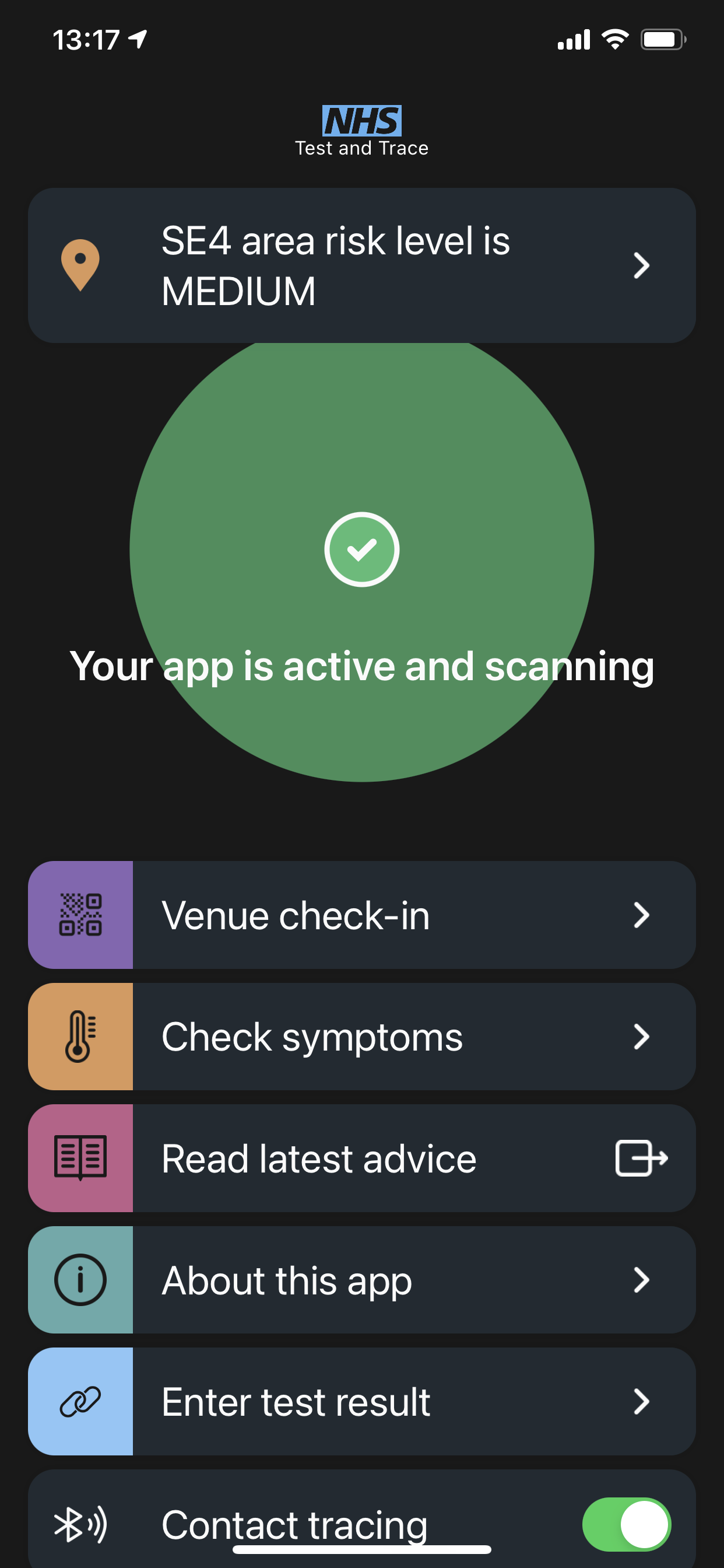The UK’s COVID-19 track and trace App is out
The Department for Health and Social Care’s NHS COVID-19 app was released today after much delay.
In May this year, I wrote about the challenges that the development team would face in building and delivering their track and trace app, which at the time the Government described as being central in its battle to control the spread of this virus.
Countries around the world moved quickly to develop their own track and trace apps, many adopting the ‘decentralised’ model favoured by Apple and Google. This model made sense given the market share of Android and iOS operating systems in smartphones around the world. Yet, the UK opted on a different approach, before a u-turn back to the Apple and Google infrastructure.
While there still might be concerns and questions about the App, the issues are now not with the App itself, but with the associated support services, such as getting a COVID-19 test or the requirement to self-isolate if the App tells you if you have been close to has tested positive.
The challenge that Governments around the world face when developing and delivering public services is that users are hostage to the quality of these when they are delivered via digital channels. Good customer experience and trust is a must from the off.
In the commercial world, if a consumer wants to buy or sell something it has a choice of apps and companies, like eBay, Gumtree or Facebook Marketplace. If they don’t like the terms or the customer experience of one, then they can move to another provider. Simple, one business’ loss is another’s gain, but in the public sector when a service is poor the damage is to Government and their political reputation, which is why risk and reputation management is so critical in the development of digital services.
So where are we now with the new UK COVID-19 Track and Trace App? Well, it is here and the team have done a lot of listening to make sure it works, but there are still challenges.
Firstly, the app. If you have concerns about privacy then don’t. It is built on a decentralised system and uses a Google and Apple API, not a Government one. Data is anonymised. As Professor Brian Cox says, chances are you are reading this on an Apple or Android phone, so there.
Also, privacy-wise if it’s good enough for Michael Veale, then it is good. This is a great Twitter thread from him where explores how it was all put together.
Of course, the app puts control of managing the virus in your hand. The App will give you data with which you can help manage the spread of the virus if the App calculates that you might have come into contact with somebody who tested positive.
It also gives you the ability to book a test, which at the moment could be the Achilles heel if you are not able to get one.
The success of this App is down to the adoption of it by people, use of it when visiting places and checking in with the QR code offering and ability to get a test. We have to use it for everyone to benefit from it. There is limited room for selfishness and here there is a need for behavioural nudging to ensure that trust, adoption and usage is as high as can be. Recent statistical modelling from Oxford University researchers showed that “In a model in which 15 per cent of the population participated, we found that digital exposure notification systems could reduce infections and deaths by approximately eight per cent and six per cent.”
While the app can play a central role in helping to control the spread of COVID-19 in the UK more than anything it is an enabler. It will only make a difference if people download it, use it and if access to testing is as seamless as it should be. The iteration of the App should noyt be looked at in isolation, but in an integrated way, carefully looking at user behaviours.
Oh, one more thing, at the moment the App only works with devices running iOS 13.5 or older and Android 6.0 or older, meaning that many people on older phones will not be able to use it. This, I hope, is something that Apple and Google can resolve soon!
In the meantime, if you are in the UK then download the NHS COVID-19 App now!


